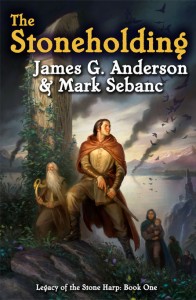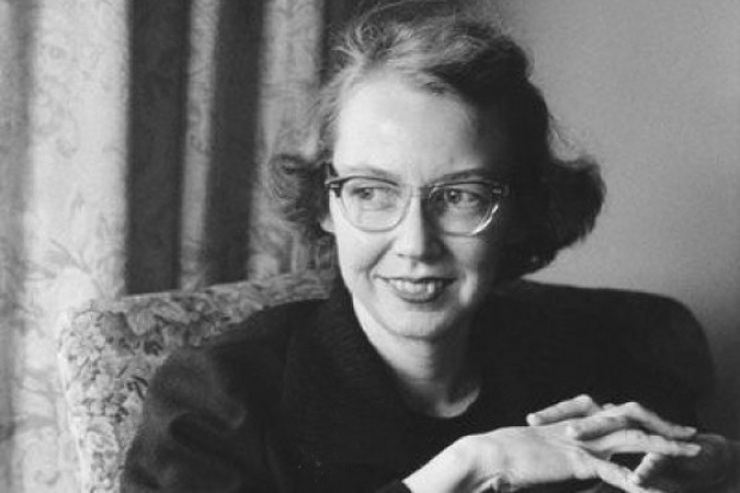 I have learned, over time, to be a bit careful when I’m soliciting review copies of books. My inner editor in me has very little patience for shoddiness, short-cuts in writing and editing, and error, especially of the grammar variety.
I have learned, over time, to be a bit careful when I’m soliciting review copies of books. My inner editor in me has very little patience for shoddiness, short-cuts in writing and editing, and error, especially of the grammar variety.
I was absolutely delighted, then, when the first two books in a series crossed my reading time and transported me into another time and place.
It’s not surprising, then, that it’s taken me almost two years to read the two books in the Legacy of the Stone Harp series, The Stoneholding and Darkling Fields of Arvon, by James G. Anderson and Mark Sebanc.
On the one hand, fantasy isn’t a genre I’m all that naturally drawn to. I have a hard time with learning the new language and naming patterns and following the maps.
Then there was a comparison with J.R.R. Tolkien on the covers. I’m not familiar enough with the genre to know about the publisher (and I didn’t do any research, preferring to remain ignorant rather than bias myself further), but it seemed to be ambitious, at the least.
I had said “yes” to reviewing these books without any sense of whether I really wanted to read them or not. I love J.R.R. Tolkien, but I have a very full shelf of review books and a very small window of reading time.
What I found as I delved into these novels was a world that swept me from my living room. The characters became human and the plot had me considering whether I could let my other work (including the care of my kids) slide for a while so I could just read, read, read.
It took me a few chapters in the first novel to get into a fantasy mindset, complete with a world that had different customs and names for things, a slightly different style of speech, and some things that just seemed weird at first. (See what I mean about not being a fantasy reader?)
Once I was there, though, I was there.
The world in The Stoneholding is on the brink of a major change, and before the book’s over, there is major realigning of characters and more than one surprise. There’s a fair amount of adventure, coupled with wisdom and insight that does, in fact, remind me of reading other Great Books (including Tolkien). Here’s a sample that I actually marked in the first book:
“First things first, as they say, even though it may be very hard sometimes to see at the beginning of an enterprise how the end is served. You’ll find, too, Kal, as you journey through life, that much will happen that will appear at the time to be blind and fickle chance, but will later be shown to fit into a larger more patterned scheme of things. That is how our lives are ordained, from the greatest to the smallest among us, king and thane, bard and yeoman alike. We accept the task of the moment without knowing or worrying whether it’s taking us backwards or forwards. It’s like an intricate dance, a cosmic dance, in which we are asked to play our part, so long as we don’t stand by our own wisdom and insist on dancing a haydigee when a jig is what’s called for.”
In the second book, we pick things up right where it left off in the first. Because I read them with a large gap of time between, I had forgotten a few things, but found myself able to figure it out and keep going with no problem.
In fact, as I was reading the second book, I found myself getting someone else interested in the series: my husband. My husband is more of a technical reader, and since he does it all day at work, he isn’t so keen to jump in on his off time—the fact that he not only read the first book right through (turning off the TV to keep going!) but ENJOYED it says something for these books.
Both books are very well-crafted, the way fine furniture is. I highly recommend them, and I can’t wait to get my hands on the third (which the authors assure me is underway—apparently they have paying jobs and family obligations and are unable to write continuously to fulfill the reading desires of a mom in Ohio).
Another reason to love the books is that the authors are faithful, practicing Catholics. There’s nothing in the books (any more than there’s anything in Tolkien’s books) that will scream “CATHOLIC!” at you. But, in my opinion, that’s all the more reason to love them—the morality and values of our faith are embedded into the very substance of the work itself.
If you want to read more about this series, here’s the website.
Sarah Reinhard loves being a Catholic wife and mom. She’s been happily married for eight years and counting, and she and her husband have three children. She has authored a number of books and writes pretty frequently at her blog.
Visit Sarah’s blog: http://SnoringScholar.com/
Check out her books: http://SnoringScholar.com/my-books/
Sarah is on Twitter.
Please help us in our mission to assist readers to integrate their Catholic faith, family and work. Tell your family and friends about this article using both the Share and Recommend buttons below and via email. We value your comments and encourage you to leave your thoughts below. Thank you! – The Editors












